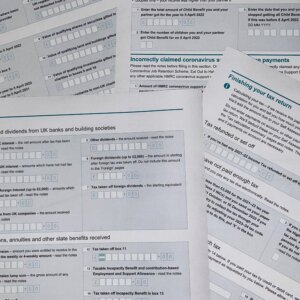Option to Tax: A Comprehensive Guide for Businesses and Taxpayers
The Option to Tax is a critical decision for businesses and property owners when it comes to VAT (Value Added Tax) in the UK. It provides the flexibility to either charge VAT on the rental or sale of certain commercial properties or to remain outside of the VAT system for those transactions. This decision can have far-reaching implications on your business’s VAT liability and recovery of VAT on expenses.
In this article, we will explore what the Option to Tax is. We will look at the process for opting in, its benefits, and the potential drawbacks for businesses. Whether you’re a landlord, property developer or investor, understanding this tax option can help optimise VAT strategies and minimise tax liabilities.
What is the Option to Tax?
The Option to Tax is a provision in VAT law that allows businesses or individuals to elect to charge VAT on the sale or lease of certain commercial properties, which would otherwise be exempt from VAT. Essentially, it gives businesses the ability to treat their property transactions as taxable. Thus enabling them to recover VAT on the costs of running the business. For example on building repairs, property management, or marketing costs.
The Option to Tax typically applies to properties that would normally be exempt from VAT, such as commercial leases. It is mainly relevant to landlords and property owners involved in the letting or selling of commercial properties.
Who Can Opt to Tax?
Businesses and property owners involved in the supply of commercial property may be eligible to exercise the Option to Tax. This includes businesses that rent or lease out commercial properties such as offices, retail spaces, and warehouses.
However, certain conditions must be met to opt for VAT. The property in question must be used for taxable purposes (i.e., for business use) and not for residential purposes. Additionally, businesses must notify HMRC of their decision to opt in, using a formal declaration.
How Does the Option to Tax Work?
Once you opt to tax a property, VAT is charged on the rent or sale of the property. The current standard VAT rate is 20%, although some transactions may benefit from a reduced rate or exemptions.
By choosing to charge VAT, the business can recover VAT incurred on property-related costs, such as:
- Construction or refurbishment of the property
- Maintenance and repairs
- Professional fees related to the property
In return, the business must submit VAT returns regularly, paying any VAT due to HMRC. They can then also claim back VAT on allowable expenses.
Benefits of the Option to Tax
The Option to Tax offers several advantages for businesses involved in commercial property transactions:
- Recovery of Input VAT: One of the main advantages is the ability to reclaim VAT on property-related expenses. For businesses undertaking significant renovation or maintenance, this can result in substantial cost savings.
- Improved Cash Flow: Opting to tax can help improve cash flow by allowing businesses to recover VAT on purchases. This can be a significant benefit for those with high upfront costs in commercial property transactions.
- Flexibility in Pricing: Charging VAT on rents or sales can allow businesses to maintain a competitive edge. As some tenants may be VAT registered and able to recover the VAT charged.
- Increased Profitability: For businesses that are VAT registered and incur significant VAT on property-related expenses, opting to tax can significantly enhance profitability by reducing overall costs.
Drawbacks of the Option to Tax
While there are several benefits, the Option to Tax is not suitable for all businesses. Consider the following potential drawbacks:
- Complexity and Compliance: Opting to tax requires careful record-keeping and regular VAT submissions. Businesses need to ensure that they comply with all tax regulations and submit VAT returns accurately to avoid fines or penalties.
- Impact on Non-VAT Registered Tenants: If your tenants are not VAT-registered businesses, they will not be able to recover the VAT charged on rent or service charges. This could potentially result in higher costs for them, which may make your property less attractive compared to other VAT-exempt properties.
- Irreversible Decision: Once the Option to Tax has been exercised, it can be difficult to reverse, particularly if the property is sold or leased to a non-VAT registered party. It’s important to carefully assess whether opting to tax is the best long-term solution.
- VAT on Sale of Property: If the property is sold within 10 years of opting to tax, VAT must be paid on the sale. This may impact businesses planning to dispose of properties shortly after renovation or purchase.
How to Make the Option to Tax
To opt to tax, businesses must submit an election form to HMRC. This is typically done using the VAT1 form. This notifies HMRC of the intention to opt to tax a particular property or group of properties. Once submitted, HMRC will confirm the election. Subsequently, the business will be required to charge VAT on all future relevant transactions related to the property.
It’s important to note that the Option to Tax is irrevocable for a minimum of 20 years for each property. However, there are circumstances where it can be reversed earlier. For example, when a property is sold to a non-VAT registered purchaser or where a material change in the property occurs. Also whether it is sold as a going concern or not can affect this.
Summary
The Option to Tax is a powerful tool for businesses involved in commercial property transactions. It offers potential VAT recovery benefits and improved cash flow. However, it is a decision that should not be taken lightly. Businesses need to carefully weigh the pros and cons of opting to tax. Particularly when considering the long-term impact on VAT liability and tenant relationships.
Consulting with an accountant/tax advisor who specialises in VAT and property transactions is crucial to ensure the right choice is made. The Option to Tax can be a valuable strategy. However, proper planning and an understanding of its implications are key to leveraging its full potential.
Alexander & Co – expert property tax advice
With HMRC penalties for non-compliance and increasing property values, VAT mistakes can be costly. Getting correct and reliable advice from the beginning is important. Our property accountants can help guide you through the process.
For example, we can assist in option to tax reversals within the 6-month cooling off period. Under other circumstances below the 20-year limit.
For potential property sales removing the option to tax can often result in significant VAT and SDLT savings. The sale of a property excluding VAT can often be more attractive to a purchaser. It also results in lower SDLT charges.
For professional tax advice on property or on other related issues, we can provide a quote to assist. To contact Alexander & Co, email info@alexander.co.uk . Alternatively, simply fill out the form below and a member of our property team will be in touch.





